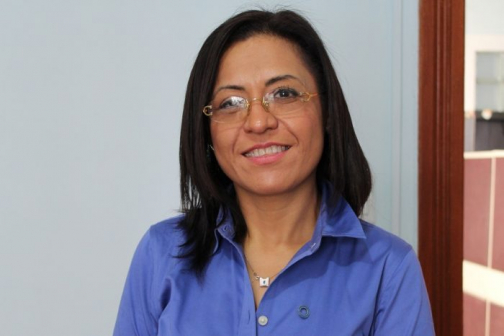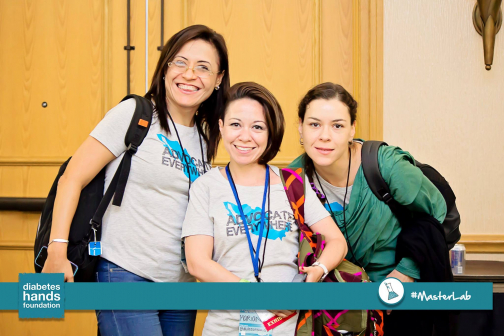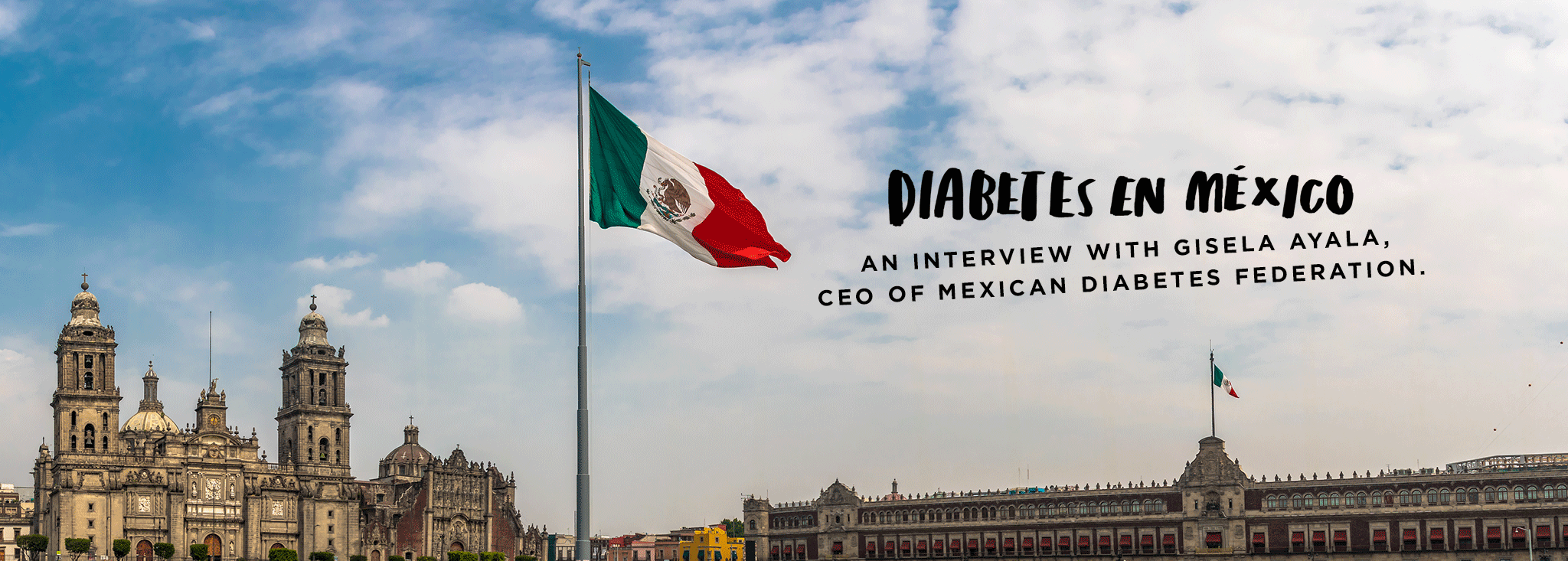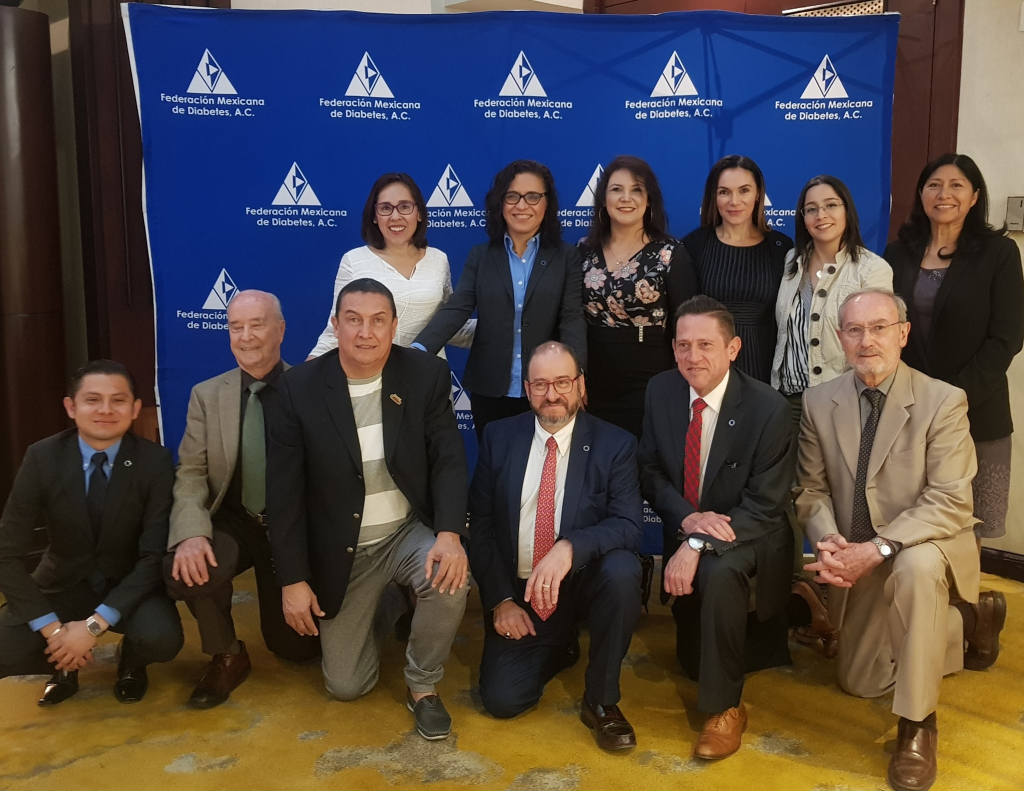Mexican Diabetes Federation CEO Gisela Ayala Talks Diabetes in Mexico
Gisela Ayala is a diabetes advocate and the CEO of the Mexican Diabetes Federation, based in Mexico City. Since 2003, Gisela has been working to promote diabetes awareness and education to help Mexicans with diabetes live healthy lives and prevent complications. Read Gisela’s personal diabetes story and her perspective on Diabetes in Mexico, in general.

I was diagnosed with type 1 diabetes in 1991 during my first semester of college. I was studying journalism and wanted to be a war correspondent. I spent two weeks with all symptoms such as polyuria, polydipsia, etc. A general practitioner ran tests and found my blood glucose was 38.8 mmol/L700 mg/dL, so he sent me to the hospital where I was admitted with diabetic ketoacidosis (DKA). I didn’t lose consciousness and in a matter of hours, an endocrinologist told me that I had type 1 diabetes and if I hired him as my physician, I was going to live until the age of 35—in Mexico, the life expectancy of people with type 1 was short. I didn’t have time to process my diagnosis. As soon as my mother heard those words come out of my doctor’s mouth, she was enraged and made him leave. He also said I was going to need insulin right away. Even though he wasn’t the most sensitive, he told me in addition to insulin, my diet was going to change and my healthcare team was going to teach me. In the hospital, a nurse taught me to inject insulin into an orange. I also learned to check my blood glucose with Dextrostix. I spent about five-to-six days in the hospital. I remember my first application of insulin. I felt really good when I got home from the hospital after recovering from DKA. Since my diet was already healthy and I didn’t have to make a lot of changes to it, my healthcare team gave me a book from Lilly Labs that explained different things related to diabetes. I read them all during my hospital stay. But still, I always thought I was going to die very young.
Finding Support
From the first moment I was diagnosed, I let others help me. My mother didn’t understand type 1 diabetes, but type 2 diabetes ran in my dad’s family. My mother, who didn’t understand the different types of diabetes, was upset with him for it. I didn’t know there were other types of diabetes, either, but I knew that my grandmother had died from diabetes complications and needed cataracts. My mother understood that my diabetes was not an inheritance. Old school friends who are still in my life quickly learned about diabetes and no one ever had trouble seeing me inject insulin. I also didn’t experience problems at my university. When I explained to my teachers why I had missed almost a week of classes, they were accommodating.
Challenges in my Management
In the beginning, I forgot my insulin several times. My biggest challenge in those days was the transport of insulin. I began school at seven, left at noon, but went to work at one in the afternoons at the local television station. Transporting insulin was really complicated. I couldn’t keep it in my backpack because it’s too hot in Mexico City during the summer to keep insulin in my bag. I’m sure that many insulin vials spoiled and I didn’t know it. I used NpH in the morning and at night and used Humulin R two units before each meal. There was one thing that no one warned me about: hypoglycemia. I was told that I shouldn’t apply insulin if I didn’t eat, but do it at least 30 minutes before. But I was told that I had to wait a few minutes or so before eating after injecting it. The first several times after using insulin were challenging and I had many hypoglycemia episodes. Another big challenge was that I didn’t have an endocrinologist and at the time only saw a general practitioner. I didn’t know exactly what I had to do. In 1995, my aunt told me Lilly laboratories had diabetes courses, where I met the first generation of diabetes educators in Mexico. They recommended I visit an endocrinologist.
About the Mexican Diabetes Federation, A.C.
The Federación Mexicana de Diabetes (Mexican Diabetes Federation), A.C (FMD) is a civil non-profit organization that looks after the interests of people living with this condition. The FMD has over 20 associations in different locations in Mexico, in which it offers patient care, both in the field of health and other support.
The FMD offers a variety of resources for people with and without diabetes such as: educational programs such as diploma courses for health professionals and courses for people with diabetes and the general population, diabetes camps through their Associations, a YouTube channel and the printed magazine Diabetes Hoy (translation: Diabetes Today) for all those interested in diabetes and health. The FMD also hosts the National Diabetes Congress, the largest diabetes conference in Mexico, where health professionals, patients and other industry leaders gather to discuss the latest findings in diabetes.
The People Leading the Mexican Diabetes Federation, A.C.
The FMD board of directors is made up of people with a connection to diabetes. Most of them are parents of people with type 1 diabetes (T1D), some of our board members live with type 2 diabetes, and others are health professionals with a proven connection to diabetes. We have specialists in internal medicine, pediatric endocrinology, or endocrinologists who have professional experience treating different types of diabetes. Our multidisciplinary scientific committee also includes psychologists, nutritionists, nurses, and others. In addition to the many professionals who lead the organization, the FMD has a small in-house staff.
Meeting the Challenges of Diabetes
Currently, the Federacion Mexicana de Diabetes is part of a movement called Por Una Sola Voz en la Diabetes Tipo 1 along with more than 20 diabetes associations in the country. The organization always seeks dialogue with decision-makers in order to achieve changes in the way in which different types of diabetes are addressed in our country. We seek to sit with these actors to offer them our help and focus on solutions instead of problems. It’s been challenging to show that the goal of diabetes education is for people with diabetes to make decisions that allow them to maintain a high quality of life. It’s important because living with diabetes is a lifelong learning process and it’s up to us professionals and decision-makers to endorse this concept and let go of the notion that our patients don’t know everything. We have to embrace seeing our patients as equals and make decisions with them as a team.
Diabetes in Mexico
Many doctors tell us that they estimate that the prevalence of T1D in Mexico. 12-13 million people in Mexico have diabetes; 1 percent of them may have type 1. Currently, there aren’t statistics that account for people with various types of diabetes. However, 10-13 million people in Mexico may have type 2.
Risk Factors for Type 2 Diabetes in Mexico
We know that type 2 diabetes has modifiable risk factors including obesity and sedentarism, both with increasingly high rates. In Mexico, we have high rates of violence, so we’re not likely to go outside to exercise. Commuting time in the big cities is currently between four-to-six hours a day so we do not really have much time to exercise or eat well. We also have little education about food. Food myths are still believed, especially the one that says that eating healthy is more expensive, among others. Also, our media doesn’t offer information to help people to eat better, exercise more and above all to avoid health conditions such as hypertension or prediabetes. Instead, there’s no nutrition education and we see a lot of unhealthy snacks in our media.
 Cultural Aspects of Diabetes Care in Mexico
Cultural Aspects of Diabetes Care in Mexico
Culturally, we don’t see diabetes diagnosed in a timely manner or visit doctors to evaluate our health. This is one of the causes of type 2 diabetes (T2D), and it is a cultural issue. People don’t say they live with T2D because there are still many myths surrounding this condition and generally everyone has something to say about another’s condition, so people aren’t as forthcoming about it.
Food-wise, we have some Mexican foods that are high in fat and sugars. If you add fast food, we have a big problem. However, there is currently a food labeling initiative to promote awareness.
Access and Diabetes Care in Mexico
Type 2 diabetes in Mexico is almost always treated at the first level of care at a health clinic. Generally, those who are diagnosed with type 2 diabetes are treated by general practitioners and in many instances although there is the possibility of testing HbA1C there are no supplies reagents needed to perform it. There is a lot of work to do to improve diabetes care; it’s a big challenge.
Patients, culturally, do not know their rights and civil organizations don’t always have the tools to demand the fulfillment of these rights. When we receive complaints of medication shortages but when we want to help people with their claims and ask for evidence families won’t provide it. Why? Because they don’t want to report to the attending physician. As patients, we don’t want to blame or point out when we aren’t given adequate service.
We need access to the necessary treatments. We also need the treatment to be considered integral and consider the effect of medications, as well as blood glucose measurements, laboratory tests and periodic reviews. If doctors and health professionals aren’t suitably trained, patients won’t be well prescribed, even if the best medications are available. So, we hope diabetes education will be supported to end the cycle we’re in, empower our patients to apply diabetes education and give them the supplies to make treatment adequate. To quote Elliott P. Joslin, the first doctor in the United States to specialize in diabetes and the founder of the Joslin Diabetes Center: “Education is not part of treatment, it is treatment.”





